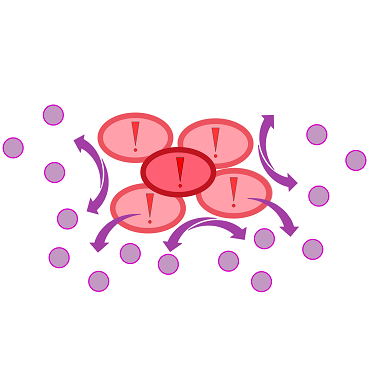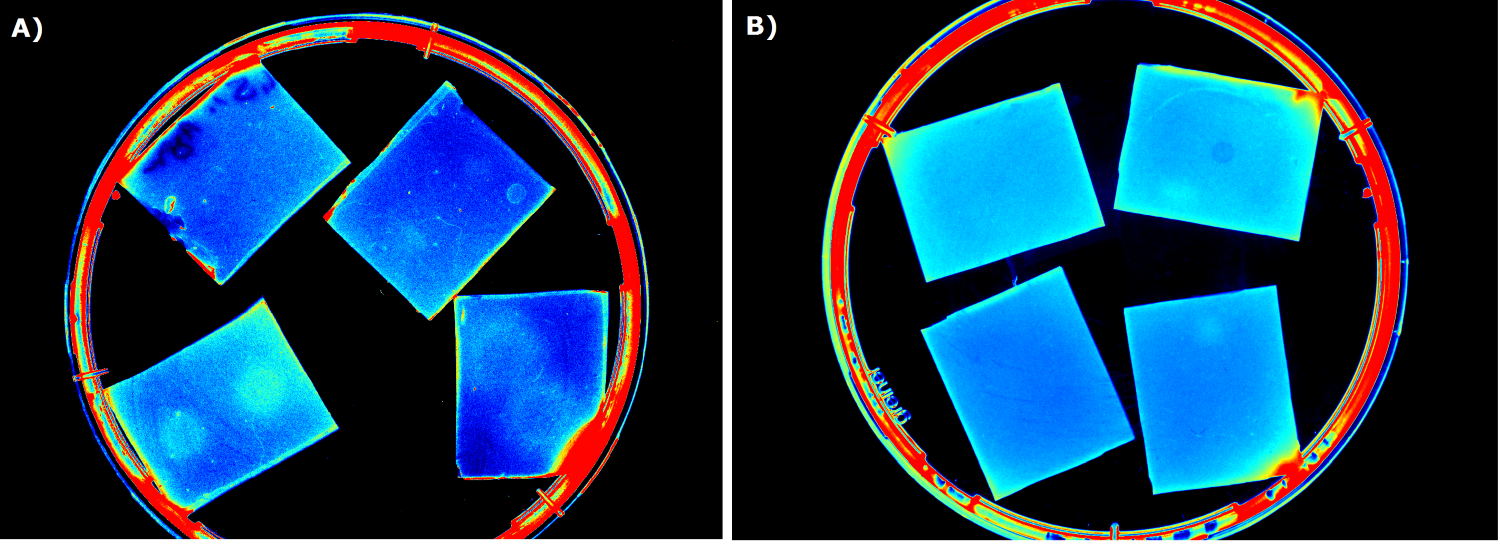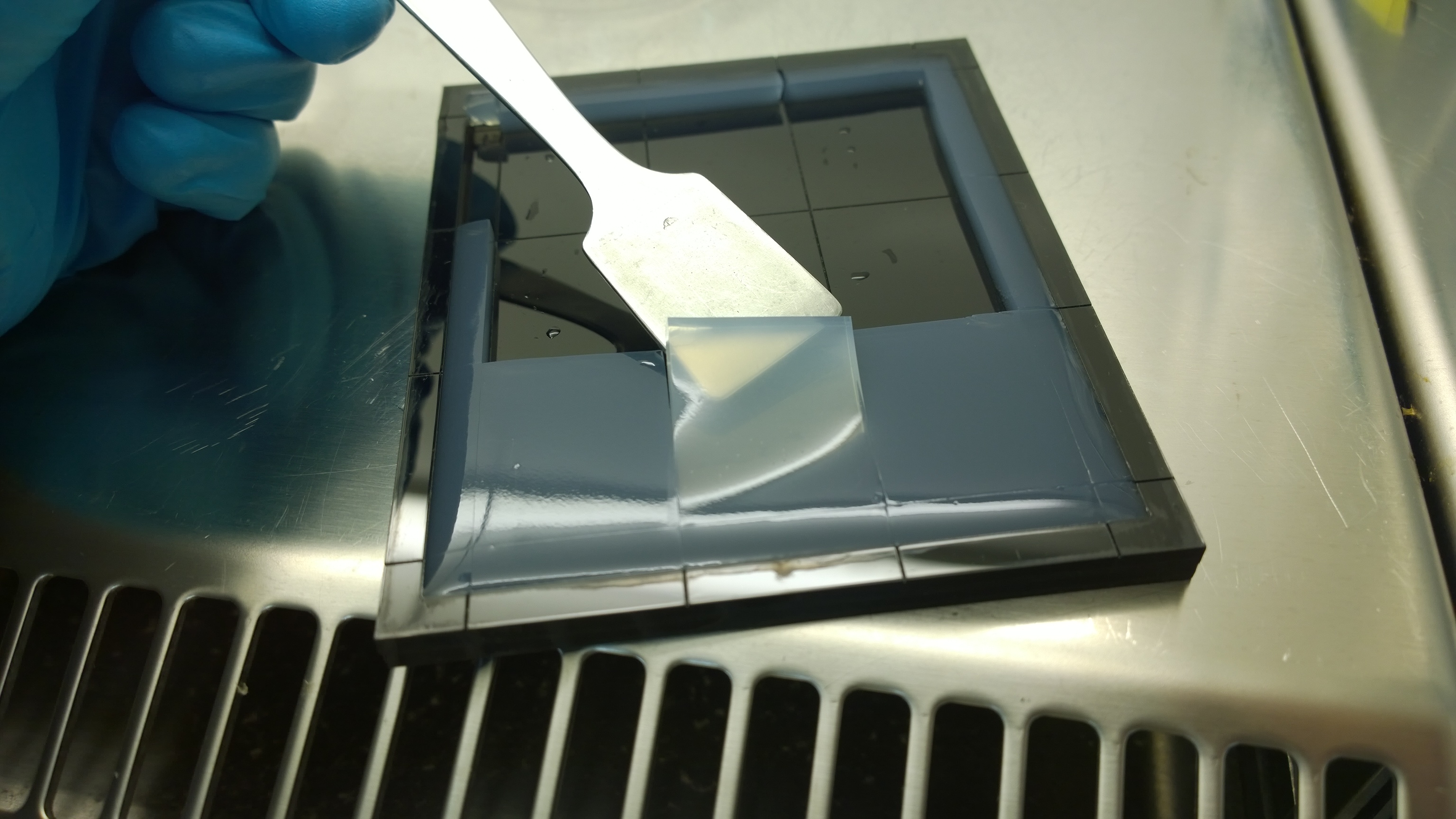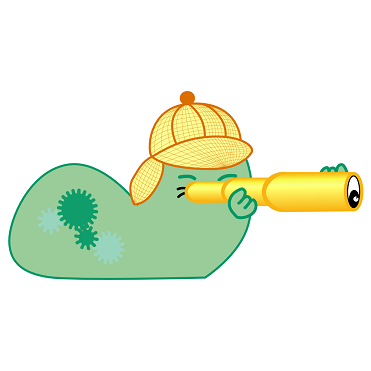Team:Aachen/Project/2D Biosensor
From 2014.igem.org
(→Optimal chip configuration) |
(→Detecting Pseudomonas aeruginosa with K131026 in our Sensor Chip with WatsOn) |
||
| Line 219: | Line 219: | ||
The result was a clear replication of the success of the plate reader experiment. The induced chip shows a clear fluorescence response eminating from the center where the induction with HSL took place. This demonstrates the ability of not only our sensor chips but also our measurement device WatsOn to successfully detect 3-oxo-C{{sub|12}} HSL. | The result was a clear replication of the success of the plate reader experiment. The induced chip shows a clear fluorescence response eminating from the center where the induction with HSL took place. This demonstrates the ability of not only our sensor chips but also our measurement device WatsOn to successfully detect 3-oxo-C{{sub|12}} HSL. | ||
| - | ===Detecting ''Pseudomonas aeruginosa'' with K131026 in our Sensor Chip with WatsOn=== | + | ===Detecting ''Pseudomonas aeruginosa'' with K131026 in our Sensor Chip with ''WatsOn''=== |
{{Team:Aachen/FigureFloat|Aachen_K131026_Pseudomonas_aeruginosa_detection.gif|title=Detection of ''Pseudomonas aeruginosa'' with K131026|subtitle=Direct detection of ''Pseudomonas aeruginosa'' on our sensor chips. Sensor cell used were K131026.|width=480px}} | {{Team:Aachen/FigureFloat|Aachen_K131026_Pseudomonas_aeruginosa_detection.gif|title=Detection of ''Pseudomonas aeruginosa'' with K131026|subtitle=Direct detection of ''Pseudomonas aeruginosa'' on our sensor chips. Sensor cell used were K131026.|width=480px}} | ||
| - | After establishing the successful detection of 3-oxo-C{{sub|12}} with our sensor chips the next step was the detection of ''Pseudomonas aeruginosa'' with our measurement device WatsOn. Therefore sensor chips with K131026 were again prepared and the right chip was induced with 0.2 µl of a ''Pseudomonas aeruginosa'' culture while the left chip was not induced. | + | After establishing the successful detection of 3-oxo-C{{sub|12}} with our sensor chips the next step was the detection of ''Pseudomonas aeruginosa'' with our measurement device ''WatsOn''. Therefore sensor chips with K131026 were again prepared and the right chip was induced with 0.2 µl of a ''Pseudomonas aeruginosa'' culture while the left chip was not induced. |
| - | The results clearly demonstrate our ability to detect ''Pseudomonas aeruginosa'' with our measurement device WatsOn. On the induced chip a definite fluorescence response is visible in response to ''Pseudomonas aeruginosa''. The fluorescence eminates outward from the induction point and shows a significant difference to the non induced chip. Therefore detection of ''Pseudomonas aeruginosa'' is possible with our sensor chip technology in our measurement device ''WatsOn''! | + | The results clearly demonstrate our ability to detect ''Pseudomonas aeruginosa'' with our measurement device ''WatsOn''. On the induced chip a definite fluorescence response is visible in response to ''Pseudomonas aeruginosa''. The fluorescence eminates outward from the induction point and shows a significant difference to the non induced chip. Therefore detection of ''Pseudomonas aeruginosa'' is possible with our sensor chip technology in our measurement device ''WatsOn''! |
{{Team:Aachen/BlockSeparator}} | {{Team:Aachen/BlockSeparator}} | ||
Revision as of 20:57, 17 October 2014
|
|
|
|
|
|
 "
"












